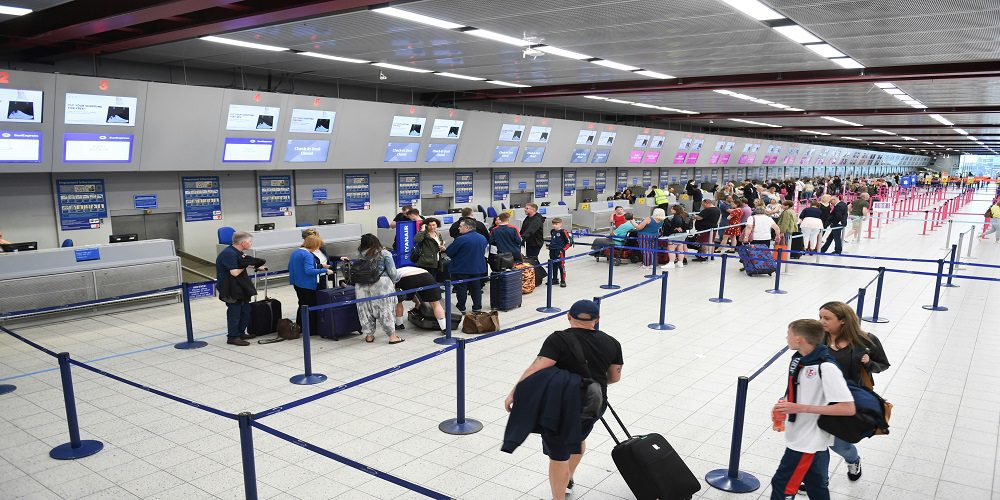Introduction:
When it comes to air travel, passengers are often faced with a myriad of rules and regulations, and one of the most common queries revolves around baggage allowance. Have you ever wondered how airlines determine the number of bags allowed on a flight? In this comprehensive guide, we will delve into the intricate details of baggage policies, shedding light on the factors that influence airlines’ decisions and how passengers can navigate these rules seamlessly.
Understanding the Basics of Baggage Allowance
Baggage allowance is a crucial aspect of air travel, dictating how much luggage a passenger can bring on board without incurring additional charges. Airlines establish these policies based on a combination of factors, including the type of ticket purchased, travel class, and the airline’s overall strategy. Most airlines classify baggage into two main categories: checked baggage and carry-on baggage.
Checked Baggage: Airlines typically allocate a specific weight limit for checked baggage, and the allowance may vary depending on the travel class. Factors such as the airline’s operational capacity, aircraft type, and route distance also play a role in determining the weight limits.
Carry-On Baggage: Unlike checked baggage, carry-on allowances are often measured in terms of both weight and dimensions. Airlines enforce these restrictions to ensure that passengers can safely stow their belongings in the overhead compartments or under the seat in front of them.
Factors Influencing Baggage Allowance Policies:
1. Ticket Type and Travel Class:
Economy, Business, and First Class Distinctions: Airlines differentiate baggage allowances based on the class of travel. Passengers in business and first class generally enjoy more generous baggage allowances compared to those in economy class. This stratification aligns with the varying costs and services associated with different ticket types.
2. Aircraft type and capacity:
Cargo Hold Constraints: The type of aircraft deployed on a specific route significantly influences baggage policies. Smaller planes may have limited space in the cargo hold, prompting airlines to impose stricter baggage limits. Larger aircraft, designed for long-haul flights, often provide more liberal baggage allowances due to increased cargo capacity.
3. Route Distance and Duration:
Long-Haul vs. Short-Haul Considerations: The distance and duration of a flight impact baggage policies. Long-haul flights, which cover extensive distances, usually permit more relaxed baggage allowances to accommodate passengers during extended travel. In contrast, short-haul flights may enforce tighter restrictions due to operational efficiency and turnaround considerations.
4. Operational Considerations:
Fuel Efficiency and Turnaround Times: Airlines weigh operational factors when formulating baggage policies. Fuel efficiency is crucial, as excess baggage contributes to increased fuel consumption. Additionally, quick turnaround times at airports require streamlined baggage handling processes, influencing the limits set by airlines to maintain operational efficiency.
5. Market Competition:
Strategic Positioning: Baggage policies are often leveraged as a strategic tool in competitive markets. Airlines may adjust baggage allowances to distinguish themselves from competitors. Offering more attractive baggage policies can be a compelling factor for passengers when choosing between carriers, contributing to market share and overall competitiveness.
6. Regulatory Compliance:
Adherence to Aviation Regulations: Airlines must comply with international aviation regulations that govern baggage allowances. These regulations set certain standards to ensure passenger safety and equal treatment. Airlines formulate their baggage policies while considering these regulations to maintain compliance and avoid legal implications.
7. Environmental Considerations:
Weight and Fuel Efficiency: Every additional kilogram of weight on an aircraft affects fuel consumption. Airlines, therefore, carefully consider baggage weight limits to enhance fuel efficiency and reduce their environmental footprint. This aligns with the industry’s increasing focus on sustainability and eco-friendly practices.
8. Historical Data and Passenger Trends:
Analyzing Past Performance: Airlines analyze historical data and passenger trends to fine-tune baggage policies. Understanding past baggage usage helps airlines anticipate future demands, ensuring that their policies align with the evolving needs and preferences of passengers.
By taking into account these multifaceted factors, airlines aim to strike a balance between providing passengers with reasonable baggage allowances and maintaining operational efficiency and profitability. Passengers, in turn, benefit from a clearer understanding of how these factors shape the baggage policies that govern their air travel experience.
Navigating baggage policies effectively
Read and Understand the Policy: The first step for passengers is to thoroughly read and understand the baggage policy of the airline they are flying with. Policies can vary widely, so it’s essential to know the specific rules that apply to your journey.
Pack Smartly: Efficient packing can help you make the most of your baggage allowance. Roll clothes to save space, use travel-sized toiletries, and consider the climate at your destination to pack accordingly.
Consider Additional Services: Some airlines offer additional services, such as purchasing an extra baggage allowance or joining loyalty programs that provide enhanced baggage privileges. Explore these options to tailor your baggage allowance to your needs.
Check for Special Allowances: Certain passengers, such as frequent flyers, members of loyalty programs, or individuals with specific needs (e.g., medical requirements), may be eligible for special baggage allowances. Check with the airline to see if you qualify for any exemptions or additional benefits.
Conclusion
Baggage allowance policies are a complex interplay of various factors that airlines carefully consider to ensure safe and efficient operations. Passengers can navigate these policies effectively by understanding the rules, packing smartly, and exploring additional services offered by the airline. As the travel landscape continues to evolve, staying informed about baggage policies will empower passengers to make the most of their journey without any unnecessary surprises.



































